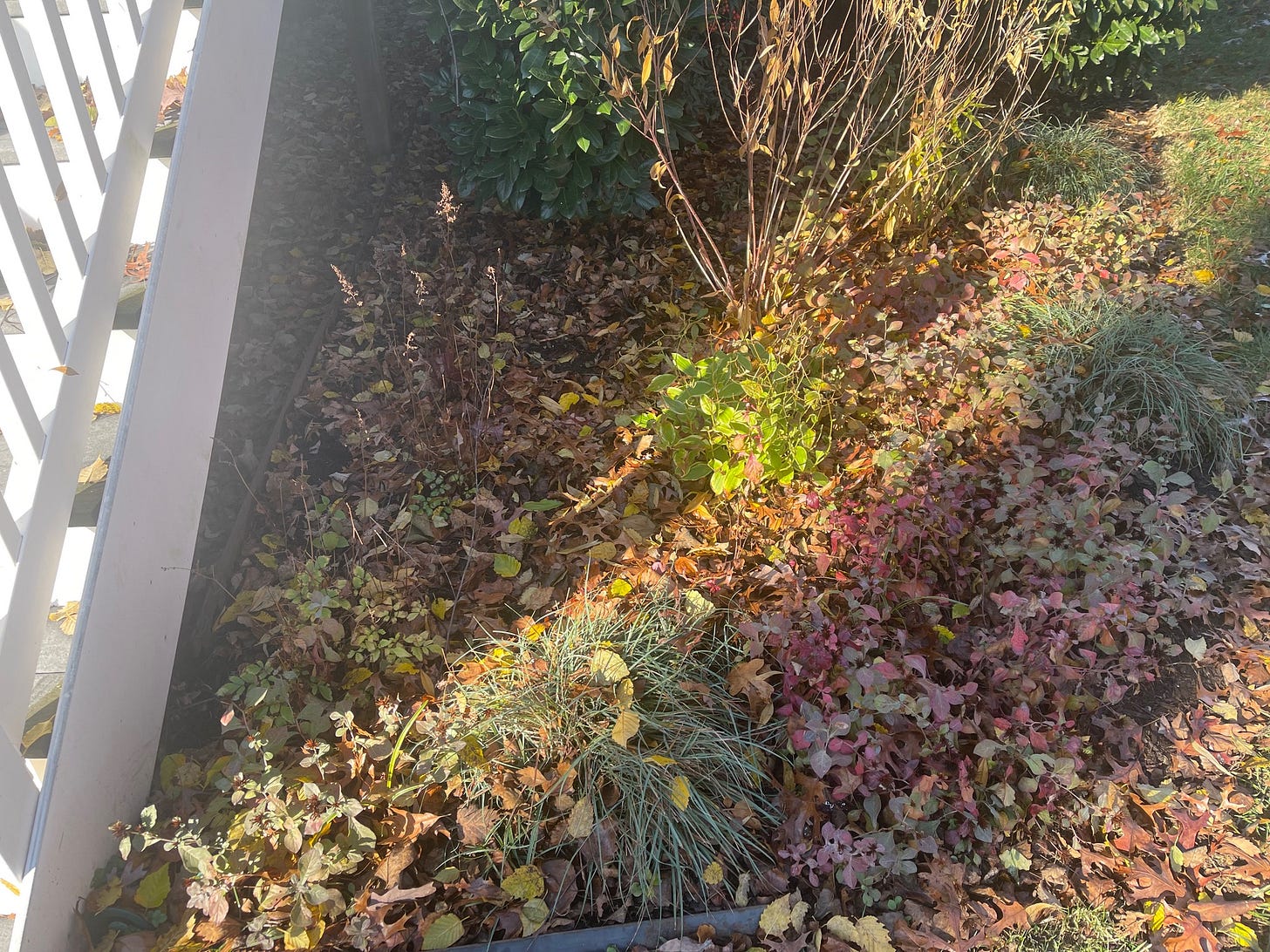The 2025 Perennial To-Do List
I have mixed emotions about the garden. I’m happy because continuing to build out the garden promises to be challenging (and fun) next year. But I’m also anxious because I can see a lot of work on the horizon for next spring. I recently wrote about the 2025 to-do list for flowering shrubs, If I Only Could Remember the Names of My Flowering Shrubs. With few exceptions, most of the shrub pruning should be done in March, weather permitting. The shrub pruning involves a reciprocating saw and several calls to paramedic organizations that will be standing by in case I lose fingers, arms, legs, etc., while removing branches from various bushes. Today I thought I would review spring’s (much safer) to-do list for maintaining and planting perennial flowers in eight beds that constitute the garden. The list is longer than I thought it would be, so let’s get started.
The Back Bed won the Bed of the Year award for 2024, mainly because it is full of perennials that bloom all year long. I wrote about this bed in a post called, It’s Getting Crowded in Here. Next year I want to remove the three red astilbe near the steps to the back porch and fill the space with two more toad lily plants to accompany the one already happily thriving in the bed. Or, I can choose some different spring bloomers for that bed.
Next to the Back Bed, the Astilbe Bed doesn’t need a lot of work. I’m considering dividing the four anemone plants in the back of the bed and relocating them … somewhere. Perhaps to the back of the Sun Bed near the ornamental grasses, or the sun side of the Waterfall Bed.
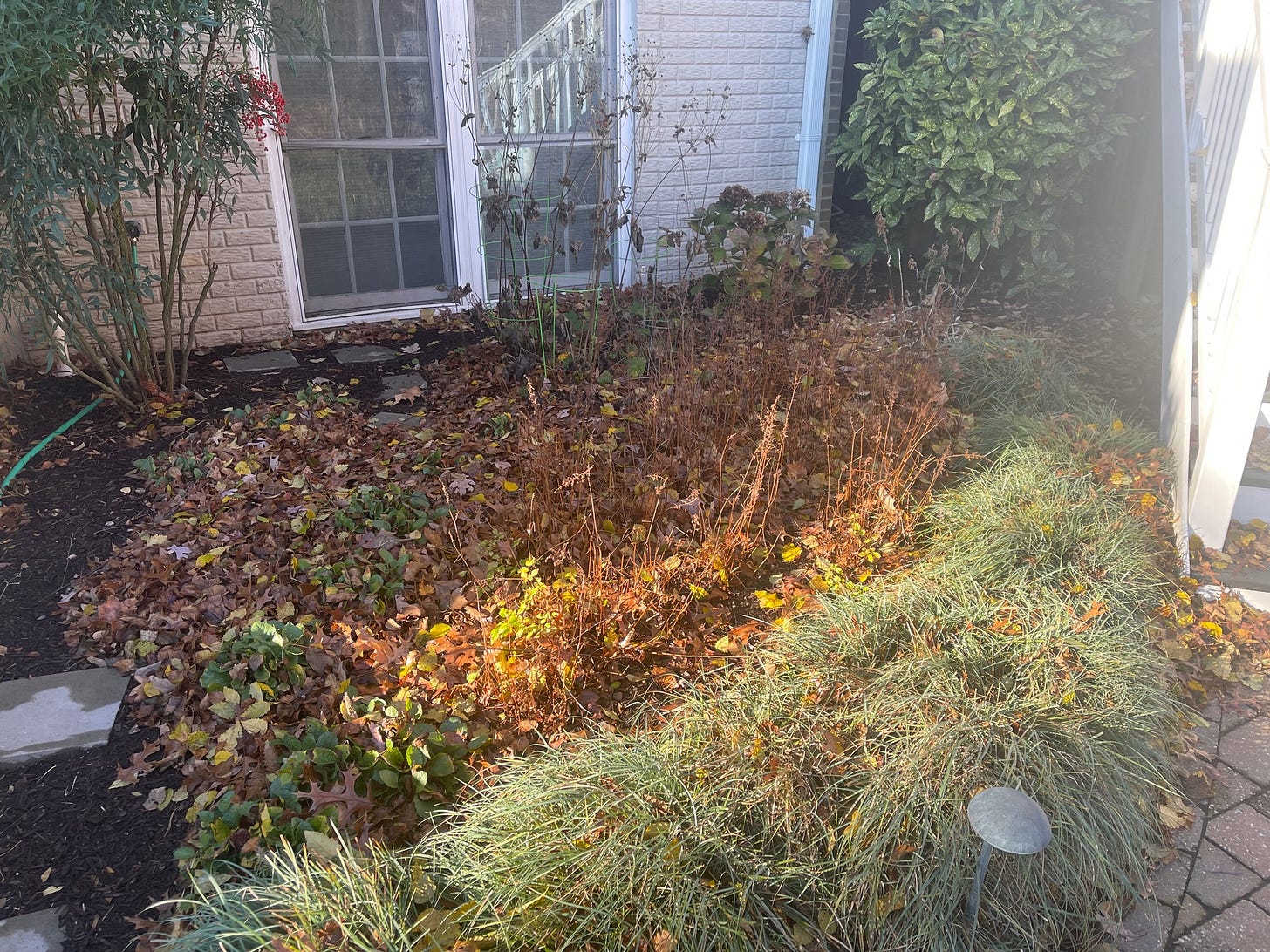
A big challenge next spring will be planting the back of the No-Longer Ostrich Fern Bed, where I dug out all of the ostrich ferns this year. I’ve left myself plenty of room to be creative, but the problem, as always with the beds in back of the house, is the lack of sun. Or more accurately, the variability of the sun. I’m thinking of trying some Encore Azalea bushes in the back right corner of the bed, and maybe red fountain grass in the back middle of the bed. I have to come up with a tall shade plant or bush that would work in the back left corner. Maybe a rhododendron? Some kind of statuary or whimsical garden addition might do the trick. I also want to move a few heuchera (coral bells) and brunnera (Jack Frost forget-me-nots) to show them off a little more in the middle of the bed.
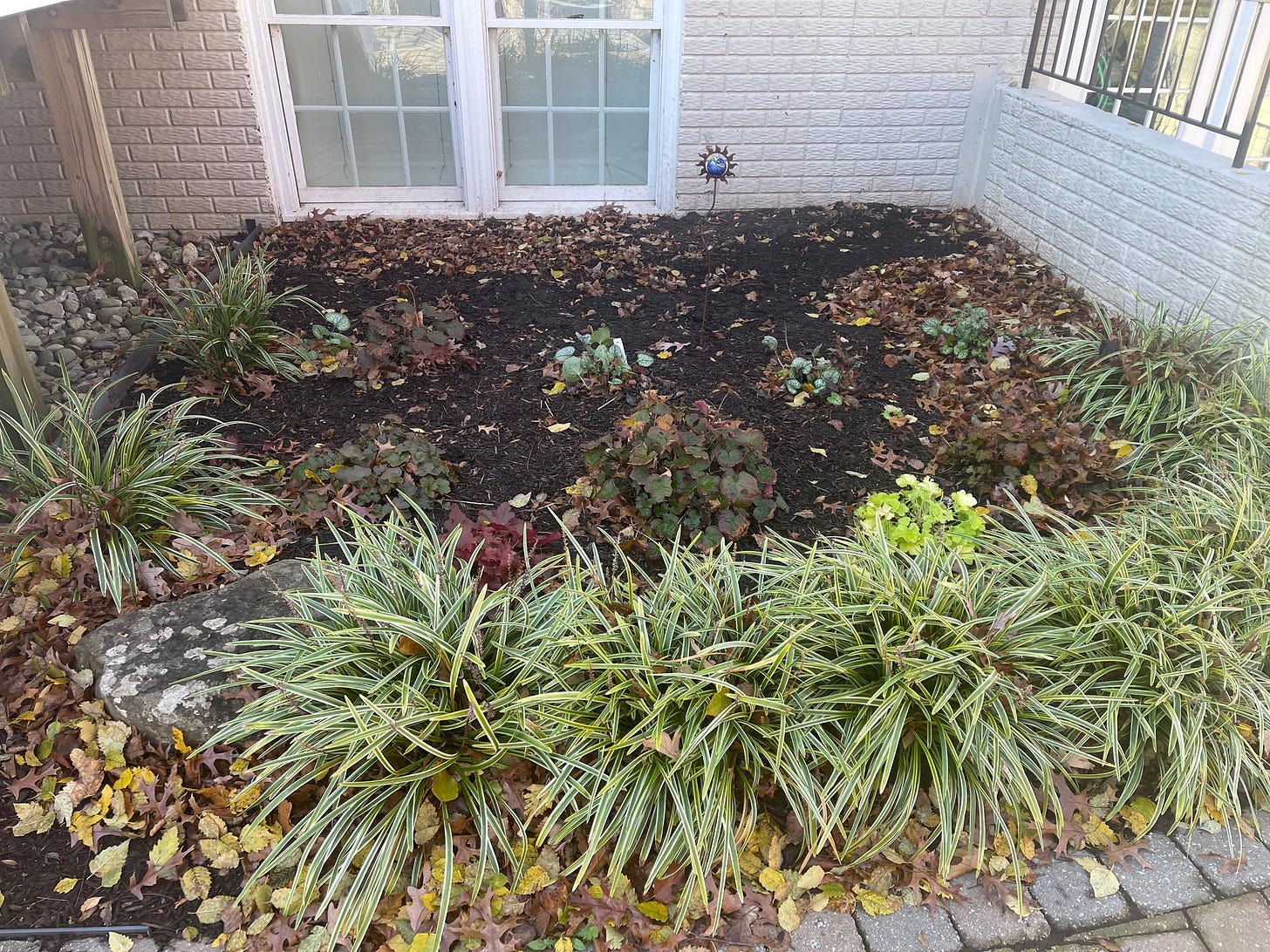
Moving on to the Firepit Bed, it’s all about maintenance next spring. It’s about time I dug up the variegated liriope and divided them. I’m also curious to see what the daffodils I planted in the bed last fall will do. About 50% of them bloomed this year and I’m hoping they’ll do better next spring.

Astute readers will recognize the Not Empty Bed as the bed that won the “Best New Bed Award” for 2024. Other than dealing with dead and dying Zagreb coreopsis, I don’t think there is much else to do in this bed next spring.
I usually think of the Waterfall Bed as two different beds, the shade side to the left of the waterfall as you face the woods in the backyard, and the sun side to the right near the Japanese maple tree. I was thinking of moving some epimedium groundcover that is struggling in the Woodland Garden behind my arborvitae trees, to the shade side of the bed. I already have two struggling epimedium there so why not add a third? Hope springs eternal. This is the last season for the shale barrens sedum groundcover next to the epimedium. If it doesn’t make spectacular progress, I’m going to move it elsewhere.
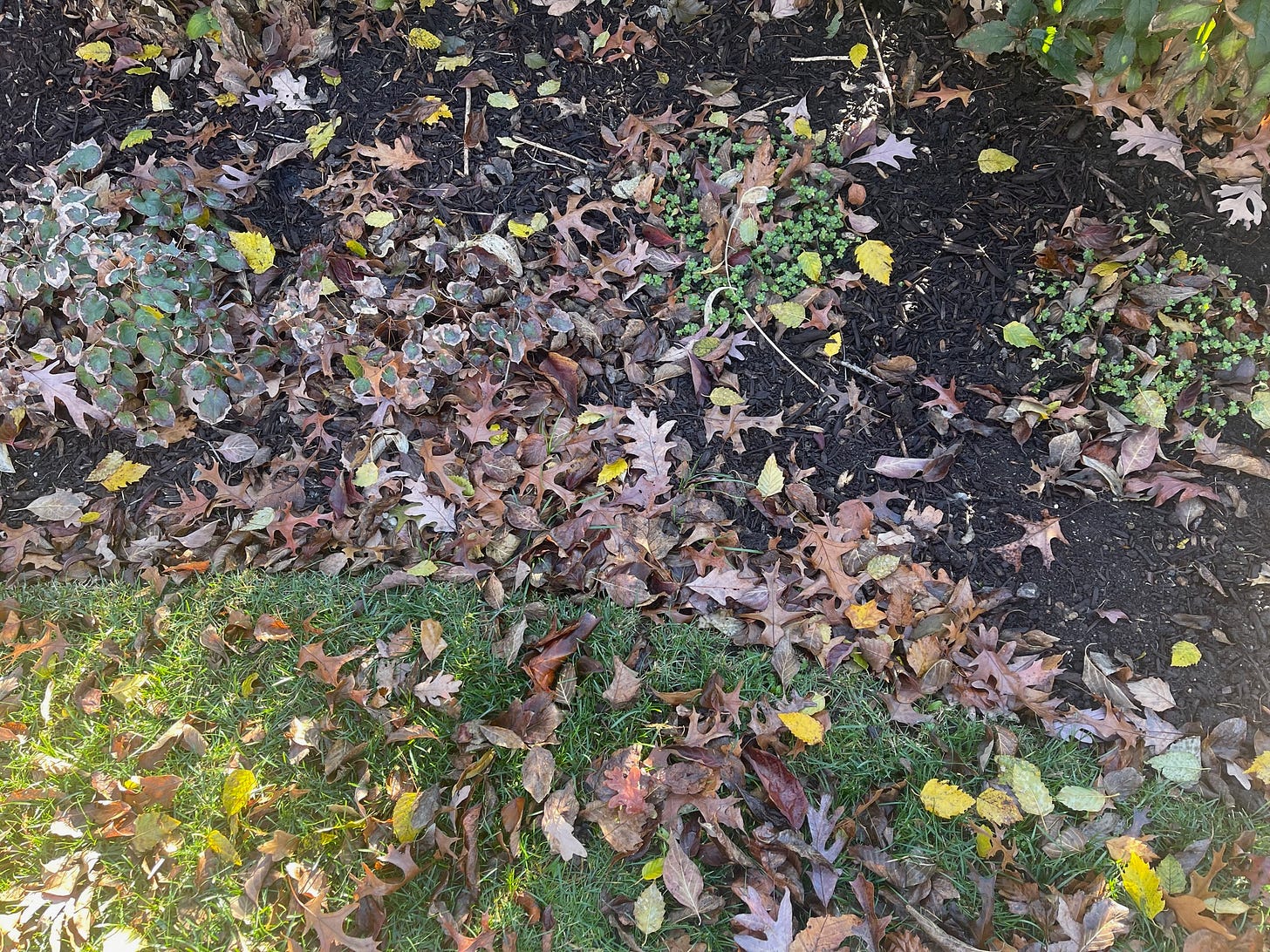
The sun side of the waterfall bed will be fun to design and plant next year. I dug out two small boxwood shrubs this year and created a good bit of space in the bed near the patio wall and the Japanese maple. I was saddened that the Rozanne geraniums along the edge of the bed seem to have lost their struggle to survive, opening even more space along the front edge of the bed. Late summer of this year I installed three compact fountain grass plants (Pennisetum) in the space with every intention of moving them once I figure out what to do. This part of the bed gets great morning sun, but the paver wall, Japanese maple, and cherry laurel create shade in the afternoon. I have lots of choices to add new plants in the spring, but no idea right now what I should do.
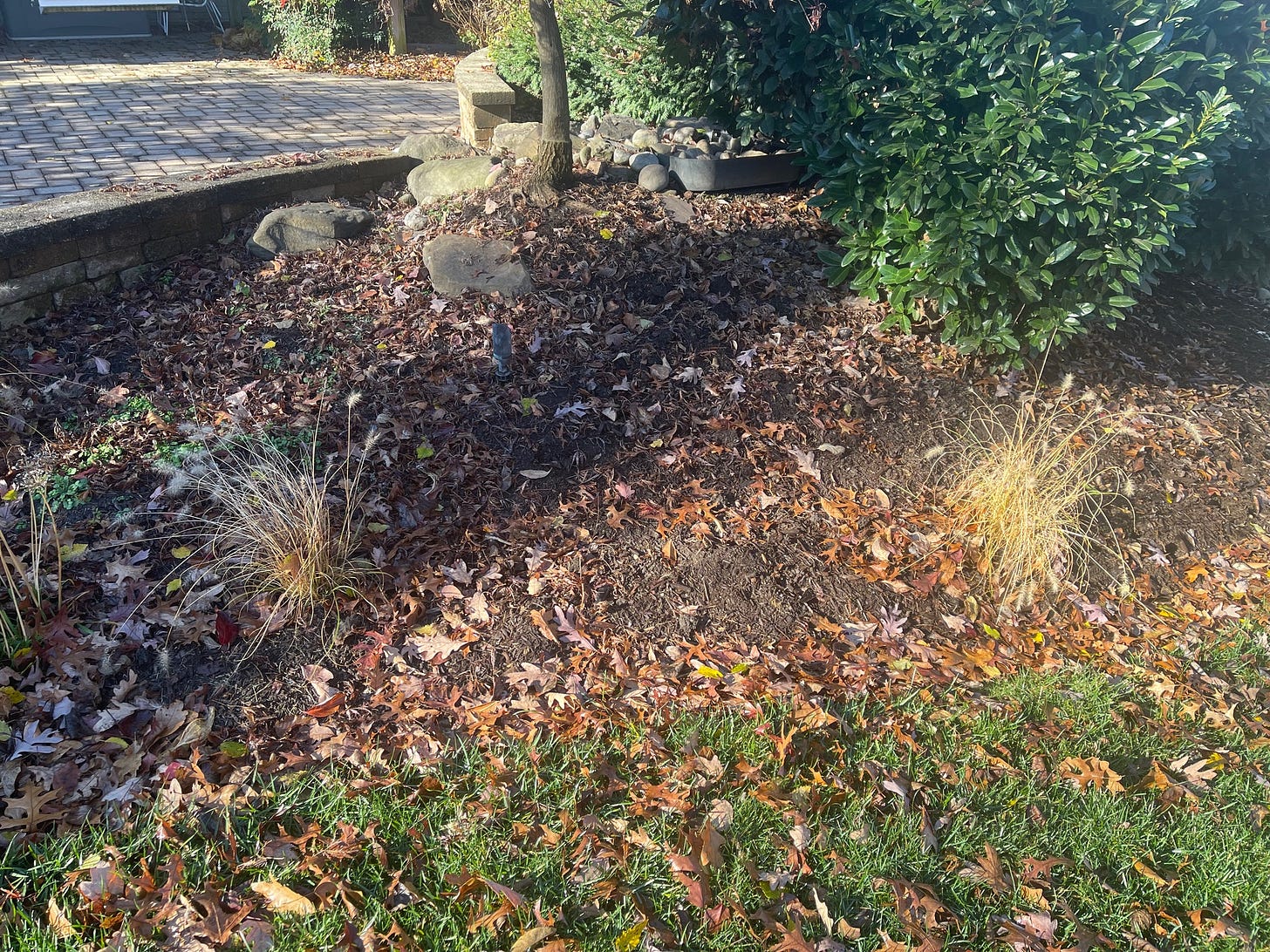
The Sun Bed is another great project for next spring. I’m hoping the Russian sage, iris, coneflowers, black-eyed Susan, and Adagio maiden grass all survive the winter. The Adagio pampas grass needs to be cut down and staked so it doesn’t fall over in the wind. I planted annuals here this year and they looked spectacular, so maybe I’ll plant more of them. But I would like to try some other sun-loving perennials and see if I can get them started next year. I’m thinking garden phlox deserves a space somewhere in the Sun Bed, or maybe right next door in the sunny side of the Waterfall bed. Bee balm is so popular that I’m thinking it also deserves a place in the sun, as well as Asiatic lilies.
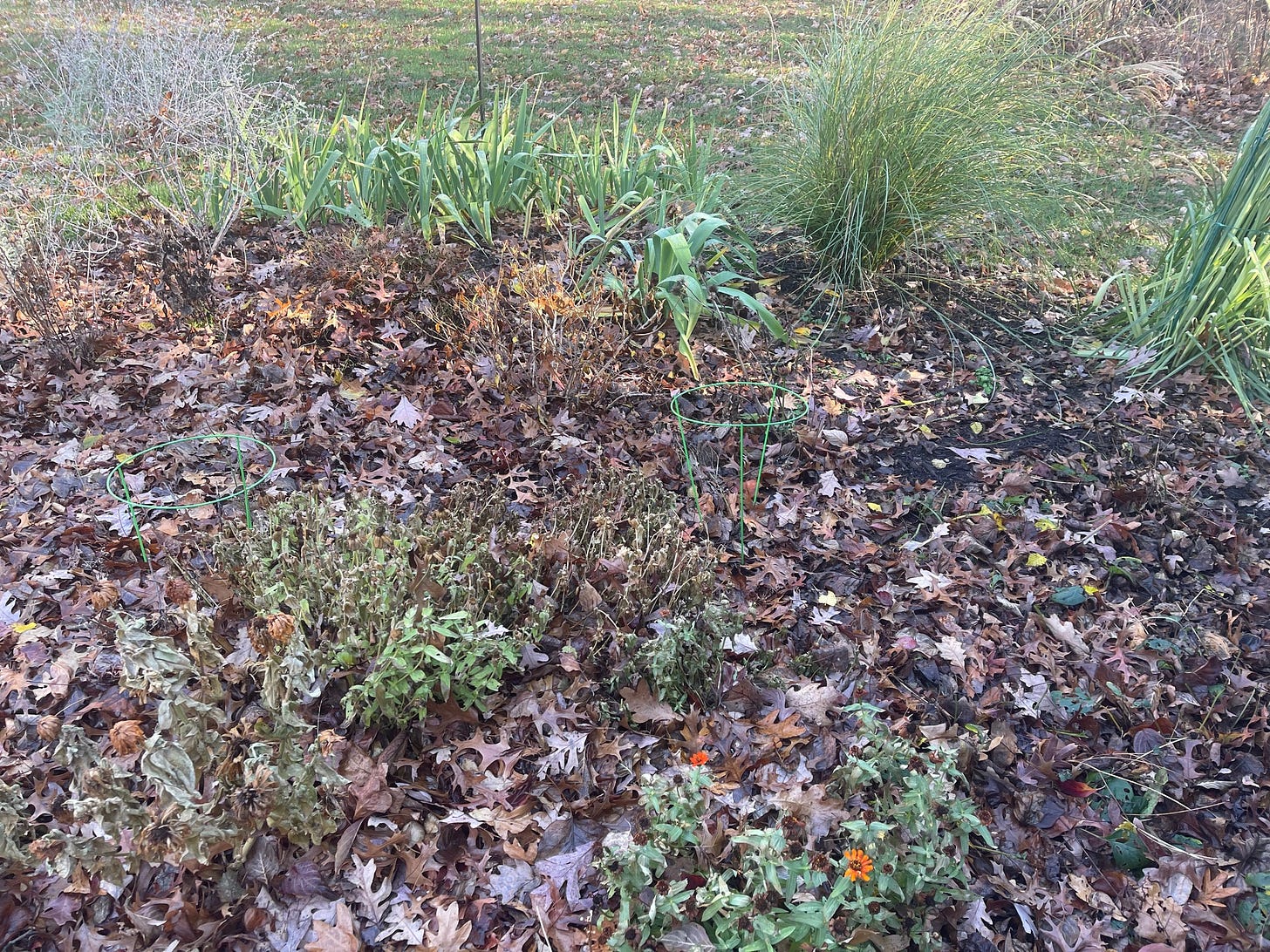
Have I mentioned the secret to a great whiskey sour? Use a good bourbon and add an egg white that adds foam to the drink when shaken at room temperature. Yummy. But I digress .…
I’m going to move the painted ferns at the base of the dogwood tree near the bottom of the steps to group them closer together, and then add some annuals to the bed for color. This is another spot where some statuary or whimsy would add interest to the garden.
The Woodland Garden needs a lot of work. To the right you see the struggling remains of white astilbe plants I transplanted two seasons ago. Next to them are Japanese ferns that are thriving along the edge of the bed, and towards the end of the bed are the Ostrich ferns I transplanted this year. The highlight of this part of the garden is the bleeding heart (actually three bleeding heart plants) that won this year’s Plant of the Year award. The problem with bleeding heart is that they completely disappear from the bed by late summer. The astilbe finish flowering at about the same time, leaving a sad lack of color for the rest of the season. I’m not sure what, if anything, to add to this part of the bed next year. I’m seriously thinking of dividing the Japanese forest grass that is growing next to the Steps Bed and transplanting clumps to the back right of the Woodland Garden near the patio. The forest grass is a beautiful shade of light green, and it grows in clumps that will fill the space nicely.
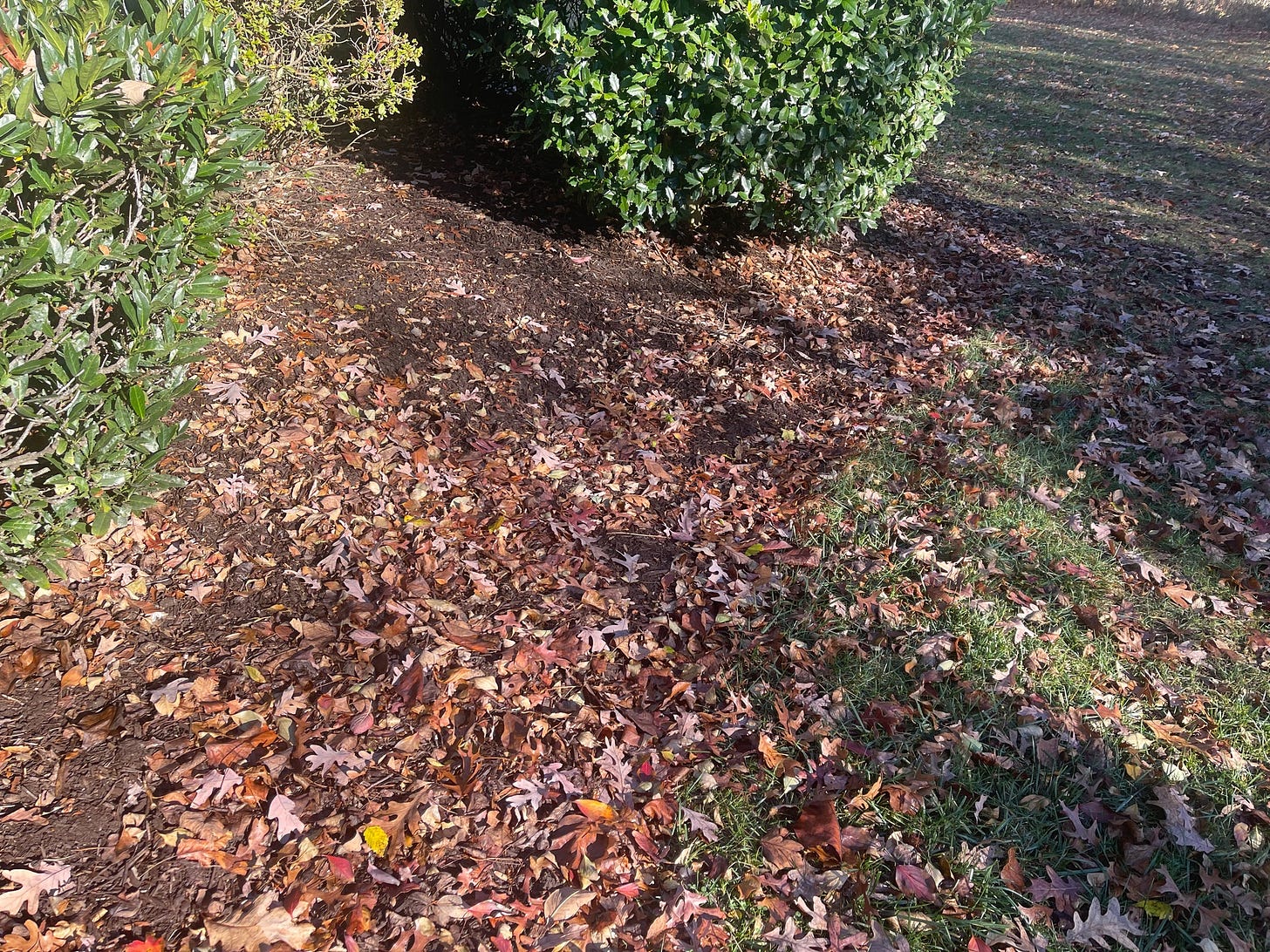
Which leads us to the Steps Bed, where I spent some money and creative energy this year to make the entrance to the garden special. On the house side of the steps, there is still room to add color at the top of the bed near the fence separating the garden from the driveway. My original design for the space included a bleeding heart at the top of the bed near the fence, and more hosta and perhaps another toad lily under the crape myrtle. I was also considering another Lenten rose and perhaps another foxglove on the house-side of the steps. And as I said earlier, it might be time to dig up and divide the Japanese forest grass.
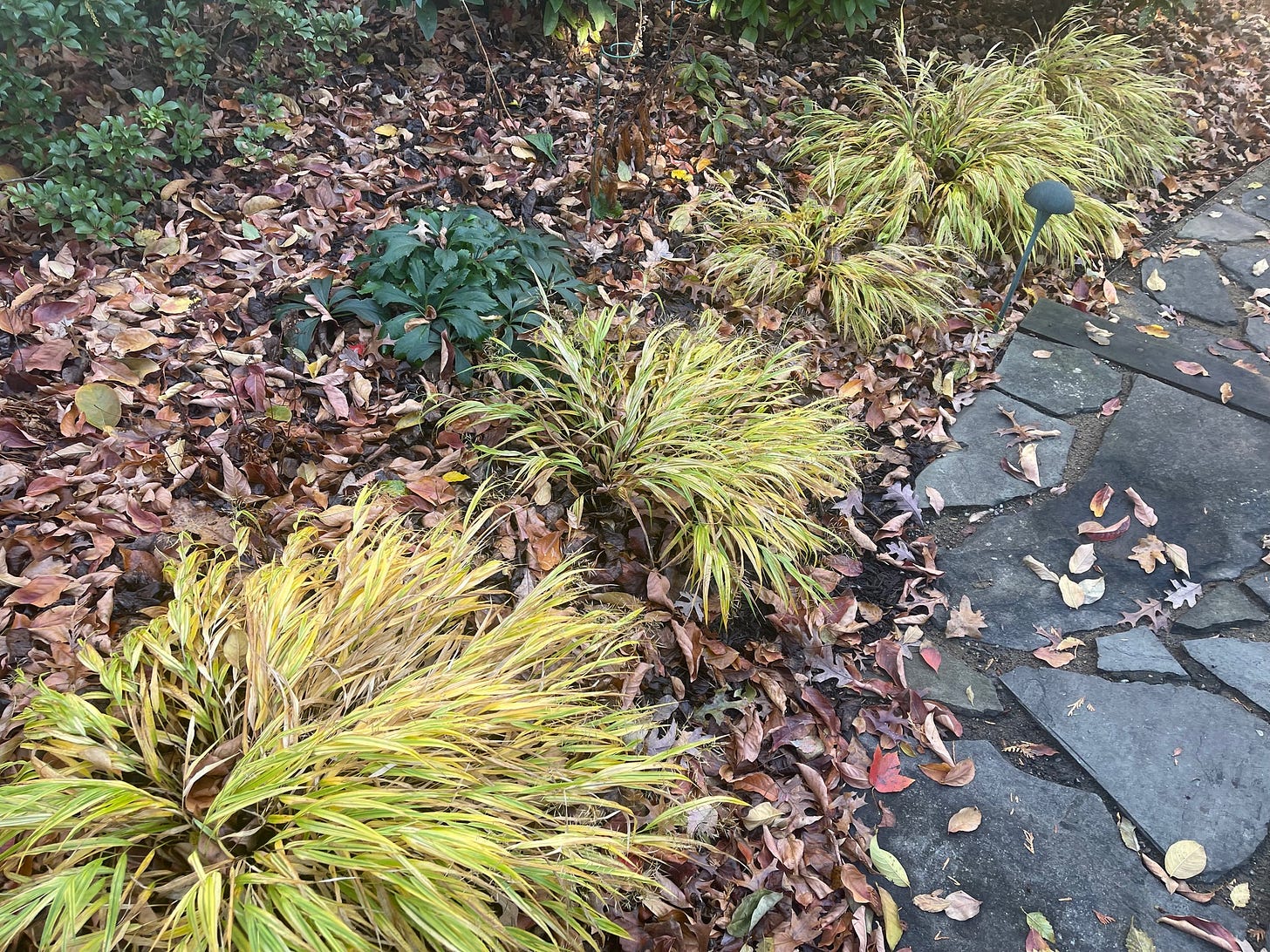
The other side of the Steps Bed, under the arborvitae trees, I’ll be adding to the planting I did last year. I added five pulmonaria and three hosta late last summer, but I’m thinking I lost two or three of the pulmonaria. (You may be noticing the calm tone of this statement, which reflects the maturity and education of this Type A Gardener. I used the word “lost” instead of more accurately saying “I think they died.” Or describing myself as a “murderer” or “killer.” Perhaps I’m getting over a small amount of self-loathing?) There is room for more plants near the patio and near the steps. I’m waiting to see what makes it through the winter before deciding.
There you have it, 278 words over my target, not counting photo captions. However, it was useful (and fun) to get this all down on paper. (Down on paper? Really?) I can’t wait for spring.
I hope you enjoyed this last look at the garden for 2024. Next week will be a happy birthday post for the blog and a tearful goodbye to all of my readers while I take a well-deserved vacation this winter. To share this post with friends and enemies, send them a link to kensolow.substack.com, or click on the share button in the text. To see free The Painful Education of a Type A Gardener content, go to the archives by clicking on my image in the Substack app.




